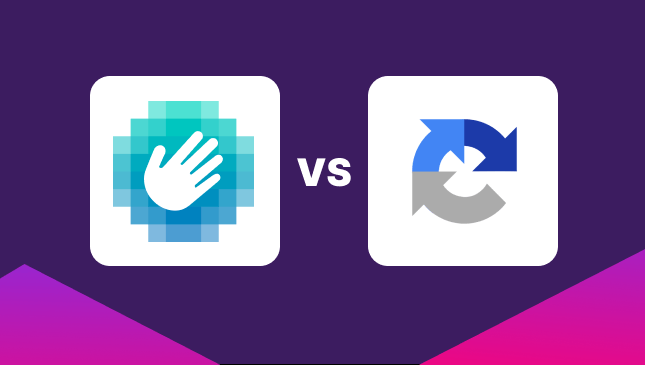What is Real-Time Bidding? The Guide to RTB
Oli Lynch
|Marketing | August 29, 2022

In the world of digital marketing, you will hear about real-time bidding, also known as RTB. It’s also often referred to as programmatic advertising.
Pretty much every ad platform uses real-time bidding in some capacity. This includes Google Ads and, to an extent, Meta or Facebook Ads.
If you’re wondering what is real-time bidding or how RTB works, we’ll explain the process and the theory simply in this post.
What is RTB?
Real-time bidding, or RTB, is the process that occurs when advertising, such as PPC ads or native ads, is bought and sold on an advertising platform. This bidding is often based on your keyword bids or the cost per click (CPC) you are willing to pay for your ad to show.
However, a request for an ad impression or placement can also come through based on demographic targeting, ad relevance, and budget.
It’s all totally automated, and it happens in fractions of a second, so you don’t do any actual live bidding.
How does real-time bidding work?
A publisher offers the opportunity for an ad placement on their site. Because the advertisers have already set their bids, an offer is made, and the most relevant offer, which may or may not be the highest bid, is then given the placement.
The advertiser’s post is then displayed, and this is registered as an impression. If the advertiser is paying by impressions, for example, on the Google Display Network, then they are charged for the ad view, and the publisher is paid.
None of the other bidders are charged until their own ads are displayed.
This is obviously a very simplified explanation of real-time bidding, and there are a few other elements that make up the process.
The elements of programmatic advertising
There are various systems that are used in the process of real-time bidding. As an advertiser, you simply sign up, create your ad, and let the system do the rest. And, as a publisher, you present your site, and the ad platform shows ads and pays you at the end of the month (or whenever you earn a payout).
These are the systems, elements, and processes that make up RTB.
Supply-side platform (SSP)
SSP is used by publishers to make their publishing inventory available to advertisers. As the supply side platform is automated, there are many publishers offering display space for banner ads, video, or other forms of ad inventory.
The supply-side platform automates generating ads on these sites by accessing the data on the demand side.
Demand side platform (DSP)
DSP is where advertisers sign up to offer their ads for display on the supply side. The demand side platform allows advertisers to host their creatives and may adapt the creative content for different display formats. For example, if the advertisers supply content and images in one size, the platform can adapt it to fit a different display size.
The ad exchange
An ad exchange is where the buying and selling of programmatic advertising takes place – the real-time bidding. The exchange serves as the intermediary between the supply side and the demand side.
Some websites offer an all-in-one ad exchange with both DSP and SSP. Google Ads is a great example of this. Google Adsense is the publisher or supply-side platform; Google Ads is the advertiser or demand-side platform.
However, other platforms such as Ezoic, Taboola, Media.net, or Bidvertiser are central ad exchanges that integrate with multiple supply and demand side platforms.
The ad exchange job is to match the correct advertiser target audience to the correct website visitor on the publisher side.
This is usually done using a mixture of tracking cookies to identify the browser’s location, browsing history, and device type, among other things.
Publishers
Website owners can make their sites available and offer ad space, which helps them to monetise their website traffic. Publisher sites can be personal blogs or niche websites, all the way up to global news corporations or high-traffic content sites like Buzzfeed or WikiHow.
Often, the ad platform will have entry requirements for publishers, which are usually a minimum volume of monthly traffic and a high standard of regular and quality content.
Publishers earn a payout usually based on impressions of ads on their sites. However, some ad forms will also pay for clicks or conversions from specific ads on a publisher’s platform.
Advertisers
Almost anyone can sign up to become an advertiser and pay to have their ads hosted on the publisher’s inventory. They simply need to apply to the ad exchange and be verified.
This usually just means they should not be advertising products that breach the exchange’s policies, such as adult products or products that promote hate speech.
Once the advertiser has signed up, they will usually specify the target audience and their budget. This will then help the ad platform to make that match using real-time bidding.
Using PPC ads
When it comes to running real-time bidding ad campaigns, the most popular by far is Google Ads. Both publishers and advertisers make the most of the huge global reach of the search giant, and the massive choice of advertising opportunities from Google Ads paid search to display ads through to video ad campaigns.
Facebook, now known as Meta, offers an alternative real-time bidding style platform using the social media model. And although you’re not bidding on keywords, you are bidding to have your ad shown to a specific audience across various platforms.
But there are many other platforms too, from Bing Ads or Taboola to RevContent.
If you’re looking for some inspiration for alternative real-time bidding platforms, check out our guide to the best PPC networks.
Can advertisers trust publishers on RTB platforms?
With the money at stake, advertisers might be wondering where their money goes with real-time bidding. Can you trust publishers not to inflate their ad revenue with fake clicks? This process, known as advertising click fraud or simply click fraud, is a challenge for both advertisers and the digital advertising industry.
And with the growing awareness of ad fraud and click fraud, ad platforms work hard to verify that a publisher is genuine and not just out to game the system (at least in theory).
Digital marketers will be reassured by the fact that it’s not so easy for a publisher to simply click the ads multiple times on their sites by hand.
Less reassuring is how easy it is to hire a click farm or buy bot software to click ads on your site on your behalf.
And although the majority of the publishers out there are genuine, there are always a few bad eggs that spoil it for everyone.
Find out more about how click fraud works in our guide
Do the ad platforms have processes to prevent fraud
Most real-time bidding ad platforms have processes in place to spot the most obvious forms of click fraud and ad fraud.
This means that if a publisher uses known methods of inflating engagement, then the ad platforms can spot it. They will also automatically refund obvious fraud or accidental clicks.
However, many of these ad platforms will not protect your ads in real-time, instead spotting the fraud after the act and refunding you.
Some also use totally different methods to prevent fraud in real-time bidding, such as blocking IP addresses. As anyone who has looked into fraud prevention realizes, IP address blocking is not an effective strategy in the long term as IPs can easily be switched or spoofed.
This is why click fraud prevention is key to any successful PPC ad campaign, as it actively blocks fraud based on multiple real-time signals.
CHEQ blocks click fraud traffic in real time using over 100 data points – meaning no need to wait for a refund.
Find out how many of your ad impressions come from fake traffic sources. CHEQ is a cost-effective tool to improve your ad campaign performance, reduce your cost per acquisition (CPA), and optimize your return on investment.
Sign up for a free trial of CHEQ Essentials and see for yourself.










